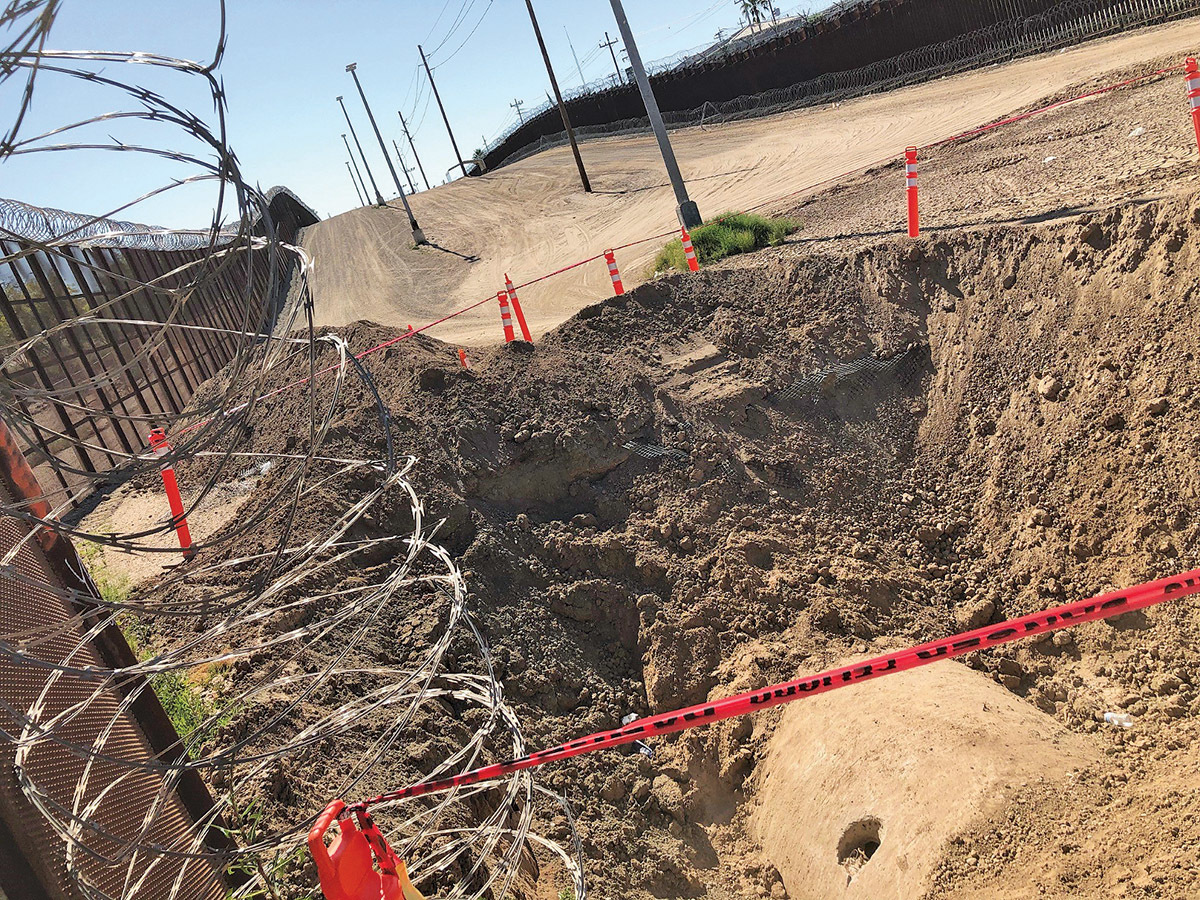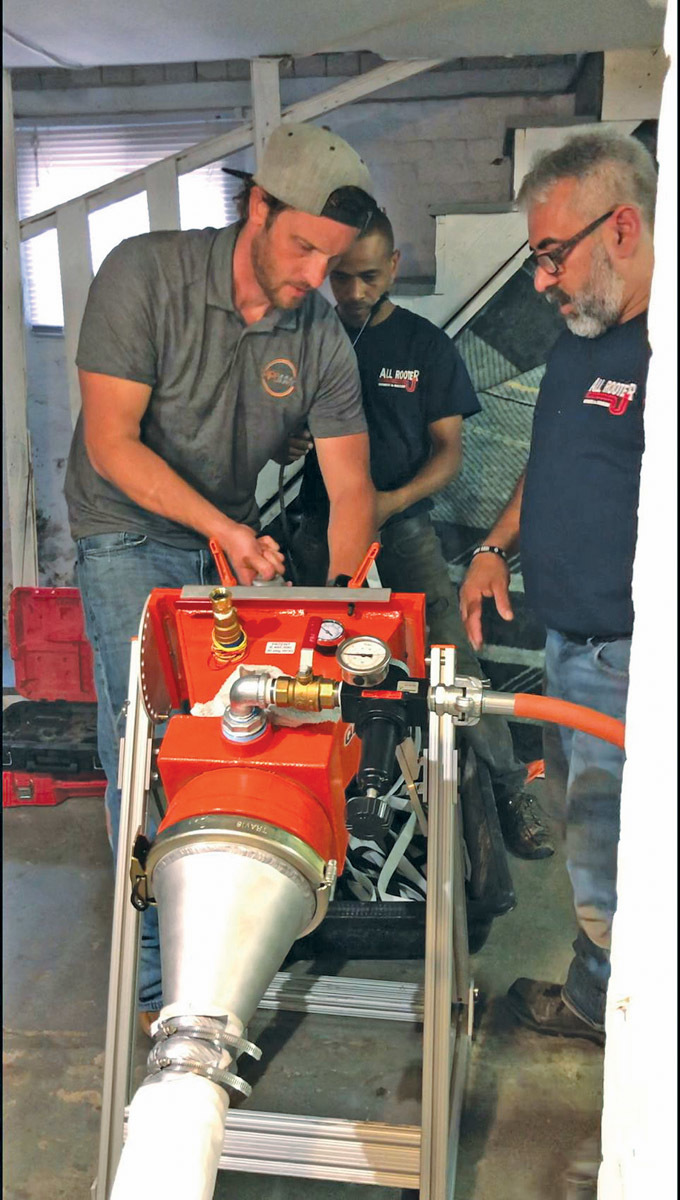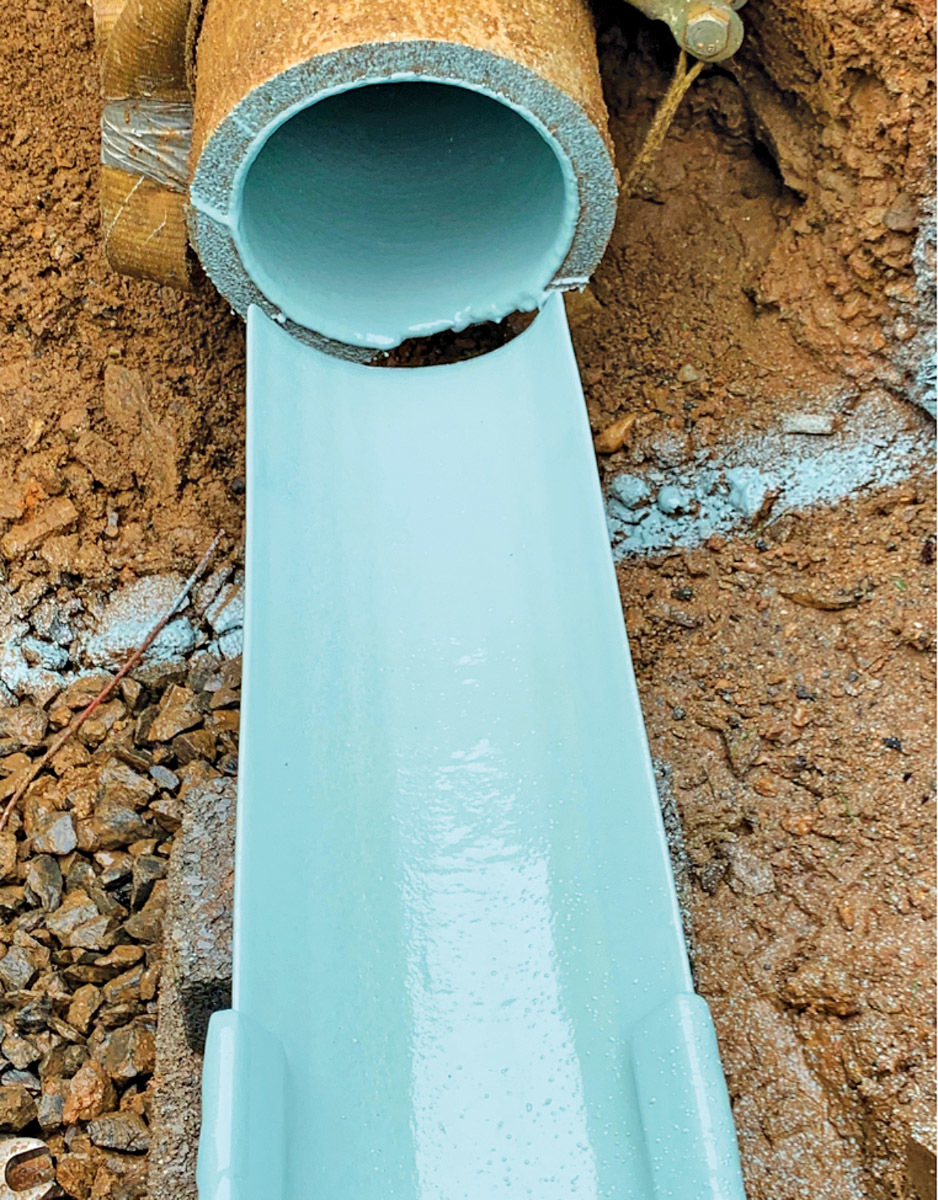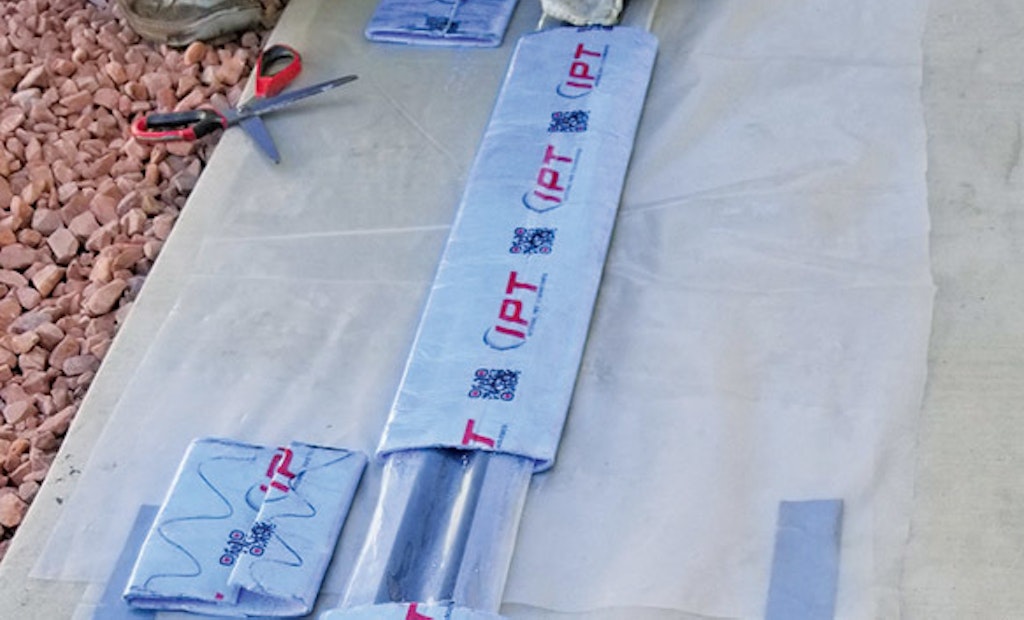Interested in Rehab/Relining?
Get Rehab/Relining articles, news and videos right in your inbox! Sign up now.
Rehab/Relining + Get AlertsCIPP lining restores cast iron pipe at naval base
Problem:
When a naval base in San Diego was remodeling its restrooms, the contractor found a crack in the 4-inch cast iron pipe.
Solution:
Flow Infrastructure was contracted to use CIPP lining in order to avoid unnecessary jackhammering to the floor in the bathroom, office spaces and a conference room. The crews first inspected, then cleaned the buildup from inside the existing pipe. Once clean, the CIPP liner from Internal Pipe Technologies was inserted into the pipe from the toilet flanges and clean-outs.
Result:
The contractor finished the restroom remodel and the liner now acts as a new pipe within the existing cracked cast iron pipe. The job was completed without demolition to the facilities. 888-478-6649; www.internalpipetech.com.

Internal joint seal used to replace hole in water supply pipe
Problem:
On a project along the U.S.-Mexico border, a contractor damaged a pipeline while drilling into the ground. The drilling caused an 11-inch hole in the pipe that supplied water from the United States to Mexico.
Solution:
Miller Pipeline was called to install WEKO-SEALs, its internal joint seal. Once on site, the team conducted its usual safety assessment of the area for precautions it would need to take. As the technicians made their way into the 72-inch pipe, they smoothed the damage inside to ensure the steel backing band would fit correctly. After fitting the rubber sleeve into place, the technicians secured two 72-inch seals, which expanded to provide a bottle-tight fit. Once the seals were in place, the technicians moved to the outside and applied a concrete mortar around the pipe to complete the patch.
Result:
Within a week of getting the call, the team had sealed the pipeline, saving many communities from water service disruption. 800-428-3742; www.millerpipeline.com.

CIPP lining system used to rehab shared lateral
Problem:
All Drains Rooter Service in New York was asked to fix a compromised 50-plus-year-old, 4-inch cast iron sewer lateral. There were open joints on the leaking and deteriorating pipe. During inspection, it was found that the next-door neighbors shared the lateral line to the main, but it was located under the driveway. Excavating would mean tearing up the driveway and sidewalk at a significant expense.
Solution:
CIPP was chosen to line the 35-foot pipe. Pipe Lining Supply’s Northeast technical trainer assisted the installer. The pipe had a hard 90-degree turn off the bat, then a 45-degree turn to the neighbors’ house (under the driveway), and another 45-degree turn to the main (located under the sidewalk). A lightweight and portable Quik-Shot unit from Pipe Lining Supply was brought to the basement. A Renssi High-Speed Cable Machine was used to prep and clean the line, then the Quik-Roller along with a vacuum was used to properly wet out the liner material (following the ASTM standards). Then the Quik-Heater was used to cure the liner. To finish the job, techs entered the neighbors’ house and used a Renssi cutter to open a reinstatement and sandpaper it smooth.
Result:
The liner hit the mark perfectly, the installer was elated with the performance of the equipment, and the homeowners didn’t have to tear up their yard/driveway/sidewalk to complete the job. 888-354-6464; www.pipeliningsupply.com.

Spray-in-place lining system enables city to stay on budget
Problem:
Keene, New Hampshire, faced budget restraints, poor flow, discoloration and leaks in its water distribution system. The city sought to make the repairs using cement mortar or epoxy resin lining, but all bids came in over budget.
Solution:
Triton Lining Systems proposed a same-day, return-to-service approach utilizing its SIP (Spray In Place) process and high-build, structurally enhancing, rapid-setting polyurethane. This material has NSF 61 certification and a one-hour cure/return-to-service time. The project was to be undertook without the use of an aboveground temporary bypass system, thus staying within budget by eliminating the costs and problems associated with the bypass system. The city obtained clearance and approval from regulatory bodies to adopt the proposed process. The project consisted of 2,505 feet of 6-inch cast iron pipe, broken down into seven individual pipe sections.
Result:
Despite a few issues with the piping system and isolation valves, the project was undertaken as planned and completed on time. No consumer was without water for longer than the time frame given for each pipe section. 407-928-9339; www.tritonpipelining.com.






